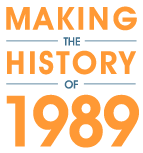Primary Sources
Browse Items: Speech
Statement by Press Secretary Fitzwater on Economic Assistance for Poland and Hungary
After Poland formed a new coalition government in August led by the noncommunist Catholic intellectual and longtime Solidarity adviser Tadeusz Mazowiecki, factions within the Bush administration hotly debated an aid policy to help stabilize the faltering Polish economy. The new government faced a foreign debt of $40 billion and hyperinflation running at nearly 1,000 percent. The rising budget….
President Bush's Remarks to the Polish National Assembly
President George H. W. Bush visited Poland and Hungary in July 1989 after June elections in which Solidarity candidates won 160 of the 161 seats in the Sejm that were available to them and 92 of the 100 seats of the Polish Senate. In addition, many leaders of the Communist Party failed to secure enough votes to be elected to the parliament they had controlled for four decades. Pursuing….
Appealing to College Students in Hungary
In the summer of 1989, President George Bush made an official visit to several East European countries, each in the midst of democratic demonstrations and public pressure on their Communist regimes. These visits provided President Bush an opportunity to lend support for the dramatic changes in Eastern Europe. In Hungary, for example, the President gave a speech at the famous Karl Marx….
Remarks Celebrating the Reunification of Germany
On October 3, 1990, the East and West German states officially united into a single sovereign state—the Federal Republic of Germany. The terms for unification were hammered out in a series of agreements including both the Unification Treaty, that dealt with domestic issues, and the Two-Plus-Four Agreement, that dealt with issues of foreign policy. In a Rose Garden ceremony at the White House,….
President Bush Welcomes Vaclav Havel to the White House
In February 1990, the newly-elected president of Czechoslovakia, Vaclav Havel, became the first Czechoslovakian leader to visit Washington and meet with a US president. A former dissident and playwright, Havel was “an enigmatic figure” in his own country, according to National Security Council staff member Robert L. Hutchings, and his meeting with President George H. W. Bush was helpful in….
President Bush and Chancellor Kohl Make Remarks on German Unification
West German Chancellor Helmut Kohl and U.S. President George H. W. Bush kept in close contact throughout the period between the fall of the Berlin Wall in November 1989 and Germany's unification on October 3, 1990. The process of German unification was complicated by the fact that there was never an official treaty ending World War II. Thus, the four victorious powers (France, the United….
President Bush's Remarks at the Solidarity Workers Monument
President George H. W. Bush visited Poland and Hungary in July 1989 after June elections in which Solidarity candidates won 160 of the 161 seats in the Sejm that were available to them and 92 of the 100 seats of the Polish Senate. In addition, many leaders of the Communist Party failed to secure enough votes to be elected to the parliament they had controlled for four decades. Pursuing….
President Bush's Remarks at a Symposium on Eastern Europe
In July 1989, President George H. W. Bush visited Poland and Hungary, the two countries in Eastern Europe in which substantial political and economic reform seemed most likely to occur first. In a series of speeches during the spring, Bush had set out his hope for a Europe “whole and free.” In April, at Hamtramck, Michigan, a suburb of Detroit heavily populated by Polish-Americans, Bush had….
President Bush Grants Hungary Most-Favored-Nation Trade Status
In July 1989, President George H. W. Bush visited Poland and Hungary, the two countries in Eastern Europe in which substantial political and economic reforms seemed most likely to occur first. Pursuing a new US policy he referred to as “beyond containment,” Bush wished to show US support for a movement toward the integration of Eastern Europe into the “community of nations.” During a….
President Bush's Remarks in Warsaw, July 9, 1989
President George H. W. Bush visited Poland and Hungary in July 1989 after June elections in which Solidarity candidates won 160 of the 161 seats in the Sejm that were available to them and 92 of the 100 seats of the Polish Senate. In addition, many leaders of the Communist Party failed to secure enough votes to be elected to the parliament they had controlled for four decades. In the….
